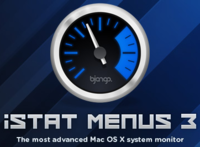The State's View of US Broadband
 Thursday, June 3, 2010 at 12:03PM
Thursday, June 3, 2010 at 12:03PM Julius Genachowski, the FCC Chairman spends a couple of minutes on Fox Business. At least the guy looks young enough to know what the tubes are...
We'll see, I guess.
 Thursday, June 3, 2010 at 12:03PM
Thursday, June 3, 2010 at 12:03PM Julius Genachowski, the FCC Chairman spends a couple of minutes on Fox Business. At least the guy looks young enough to know what the tubes are...
We'll see, I guess.
 Wednesday, June 2, 2010 at 11:08AM
Wednesday, June 2, 2010 at 11:08AM Recently, Steve Jobs took the stage at All Things D. I just wanted to re-post the video from their site.
Here's Steve on Flash...
...on the origin of the iPhone...
...talking about Google...
...about iAds...
...on the Gizmodo iPhone kerfuffle...
...talking about TV...
...and last (but not least) on AT&T.
Sir Steve is still fun to watch. I, for one tend to get lost in all the technorati mumbo-jumbo. Mr. Jobs has a way of distilling things to simplicity. Apple without Steve Jobs is like Ford Motor Company without Henry Ford, it doesn't exist.
 Friday, May 21, 2010 at 3:18PM
Friday, May 21, 2010 at 3:18PM  The MacTexan LairAfter five months, my “BigMac” as I like to call it, is my favorite computer of all time. I get a little perturbed when tech magazines and blogs write reviews about machines just a couple of days after they’re released. I know in this fast-paced world of internet journalism there is huge pressure to be “the firstest with the mostest”. While I’ll admit to being anxious to read the first words written about Apple’s latest shiny, when it comes to making a serious decision about spending multiple thousands of dollars on a new computer, I prefer a more in-depth analysis than release day reviews can provide.
The MacTexan LairAfter five months, my “BigMac” as I like to call it, is my favorite computer of all time. I get a little perturbed when tech magazines and blogs write reviews about machines just a couple of days after they’re released. I know in this fast-paced world of internet journalism there is huge pressure to be “the firstest with the mostest”. While I’ll admit to being anxious to read the first words written about Apple’s latest shiny, when it comes to making a serious decision about spending multiple thousands of dollars on a new computer, I prefer a more in-depth analysis than release day reviews can provide.
 Tuesday, May 4, 2010 at 4:19PM
Tuesday, May 4, 2010 at 4:19PM  I'm really amused by all the verbal sparring of late between Apple and Adobe. Mr. Jobs' open letter explaining Apple's (his) position regarding Flash on the iPhone OS, while obviously somewhat self-serving, did codify a number of reasons for keeping Flash out of the ecosystem. These reasons are all to familiar to us Mac users, but I can understand why the rest of the world is less than convinced about his sincerity. Flash, while not perfect on Windows, is completely lousy on OS X. As a relatively new switcher of three years, this performance contrast is still fresh in my mind. In fact, I can remember being convinced I'd done something wrong the first time I installed the Flash plugin in Safari. The experience introduced me to "beachballing".
I'm really amused by all the verbal sparring of late between Apple and Adobe. Mr. Jobs' open letter explaining Apple's (his) position regarding Flash on the iPhone OS, while obviously somewhat self-serving, did codify a number of reasons for keeping Flash out of the ecosystem. These reasons are all to familiar to us Mac users, but I can understand why the rest of the world is less than convinced about his sincerity. Flash, while not perfect on Windows, is completely lousy on OS X. As a relatively new switcher of three years, this performance contrast is still fresh in my mind. In fact, I can remember being convinced I'd done something wrong the first time I installed the Flash plugin in Safari. The experience introduced me to "beachballing".
Before I go any further, a disclaimer. I’m no fan of Flash (or Adobe for that matter). I really thought it was terrific when I first saw it, but that was a long time ago. When it was first introduced there was a void in the internet experience that Flash filled quite nicely; multimedia. HTML standards at the time were virtually devoid of any means of presenting interactivity or video. Hover buttons and the very limited GIF graphic format is about all there was. Consequently, flaming logos and animated mailboxes signified Web 1.0. Adobe was smart to develop and freely distribute browser plugins to fill this void and Flash became the de facto standard for distributing multimedia content on the web. In fact, it’s hard to imagine today’s internet without it. YouTube, hulu, Ustream and by some estimates, 75% of all web video is delivered via Flash. That being said, just because three out of four internet videos use Flash encoding doesn’t mean it’s the best method. In fact, Flash is a fourteen year old technology designed when the internet was a very different place and the average PC wasn’t nearly as powerful as today’s cell phone. With HTML 5 all but a done deal, the need for a proprietary, third-party delivery system is waning if not completely nonexistent.
Disclaimer #2: I'm an Apple fanboy who makes no apologies for lusting after almost everything they make. That being said, I'm no apologist for many of the "walled garden" policies enforced by the company. It's almost laughable when the world's biggest control freak, Steve Jobs writes an open letter to the world lecturing everyone on the virtues of open web standards and HTML 5. This coming from a man who refuses to allow iPhone, iPod and iPad owners to install software on their own devices unless his company approves it first. During his iPad announcement keynote he had the gall to proudly proclaim “...you can set the device's background wallpaper to whatever you want.” Like that is some sort of privilege? I couldn't believe he said it with a straight face!
Apple (Mr. Jobs) is very intent on insuring a smooth, reliable user experience on all their devices. I get that. I just don't appreciate him lecturing the world on "openness" while making the argument that Flash could ruin that experience.
Adobe on the other hand, isn't exactly lilly white either. They, better than any company I can think of, exploit the "Gilette Razor" business model to leverage their position as gatekeeper of web multimedia content. By developing and freely distributing Flash plugins for almost every browser and operating system (the razors), they've built a huge user install base allowing them to charge a premium for their proprietary development and deployment tools (the blades). This near monopoly gives them carte blanche to dictate terms to web designers and developers alike and like any monopoly, innovation is stifled. For example, they’ve made little or no effort to take advantage of newer chip architecture that allows for hardware decoding of H.264 video. This makes rendering video much more efficient, saving CPU cycles and power. Consequently, Flash video playback has deservedly earned labels like “resource hog” and “battery eater” and is one of the main reasons Apple won’t allow it on their portable devices. Additionally, while users get free plugins to view Flash content, Adobe really soaks developers for Flash creation tools. The basic Flash tool, Flash Professional CS5 retails for $699 with the Web Premium version a whopping $1799! They pay through the nose for the privilege of developing poor-performing software. Flash content can be beautiful and full-featured but it is last decade’s technology wrapped up in new tools.
Both Apple and Adobe are making eloquent speeches about the virtues of their positions and how their solution is the best for everyone. I’ve tried to look at the situation objectively and filter through the self-serving rhetoric from both camps. In the end, I side with the best technology and on that point Apple happens to be correct. Hanging on to Flash is an exercise in choosing the path of least resistance and staying the course of using the millions of already installed browser plugins to view multimedia content. The better technology is the more efficient HTML 5 standard but it will require a significant development effort to implement. In the end, HTML 5 will be simpler for users, require less power, is more open and cheaper for developers. It just happens to be the Steve Jobs side of the argument.
 Friday, April 30, 2010 at 10:36PM
Friday, April 30, 2010 at 10:36PM  OK, call me a gearhead. I’ll admit, I like to see what my Mac is doing, how it's running and how much free memory remains, but the real reason I started using iStat Menus was because it looks so cool in my menu bar. Blinking lights, perpetually updating graphs and pristinely drawn drop-down menus give my Macs that “highly instrumented” look that many of us geeks crave. You know how it is. We’re drawn to blinking LEDs like moths to a flame.
OK, call me a gearhead. I’ll admit, I like to see what my Mac is doing, how it's running and how much free memory remains, but the real reason I started using iStat Menus was because it looks so cool in my menu bar. Blinking lights, perpetually updating graphs and pristinely drawn drop-down menus give my Macs that “highly instrumented” look that many of us geeks crave. You know how it is. We’re drawn to blinking LEDs like moths to a flame.
All that aside, for me, a Mac without iStat Menus feels a bit incomplete. It’s one of the first things I install when I get a new machine. I’ve become so accustomed to using it, when I drive a Mac without it it feels like I’m in a car with no dashboard. Discovering my Mac’s CPU load, network and disk activity and a host of other things with a half-second glance has become second nature. I’m completely spoiled. That’s why when Bjango popped up a message on each of my Macs stating that version 3 of their product was no longer free, I clicked the “Buy” button with less hesitation than a politician raising taxes. Besides, its a good deal. A single license goes for ten bucks, but a family pack of five is only $18. I have to admit to feeling a bit guilty using the first two versions "por nada". iStat has never looked or performed like free software. Version 3 has been updated to work with the new Core i5 & i7 iMacs (version 2 had problems with the NIC monitor) and the Bjango boys have done their usual great job of “spit polishing” the app. The new look is beautiful and perfectly complements their near flawless execution of providing a fully customizable menu bar app to monitor almost every measurable parameter of your Mac. I’m not going to do a review here but I urge you to download the 14 day free trial and try it for yourself. If you get hooked like I did, you’ll only need to skip one Big Mac meal to pay for it.
